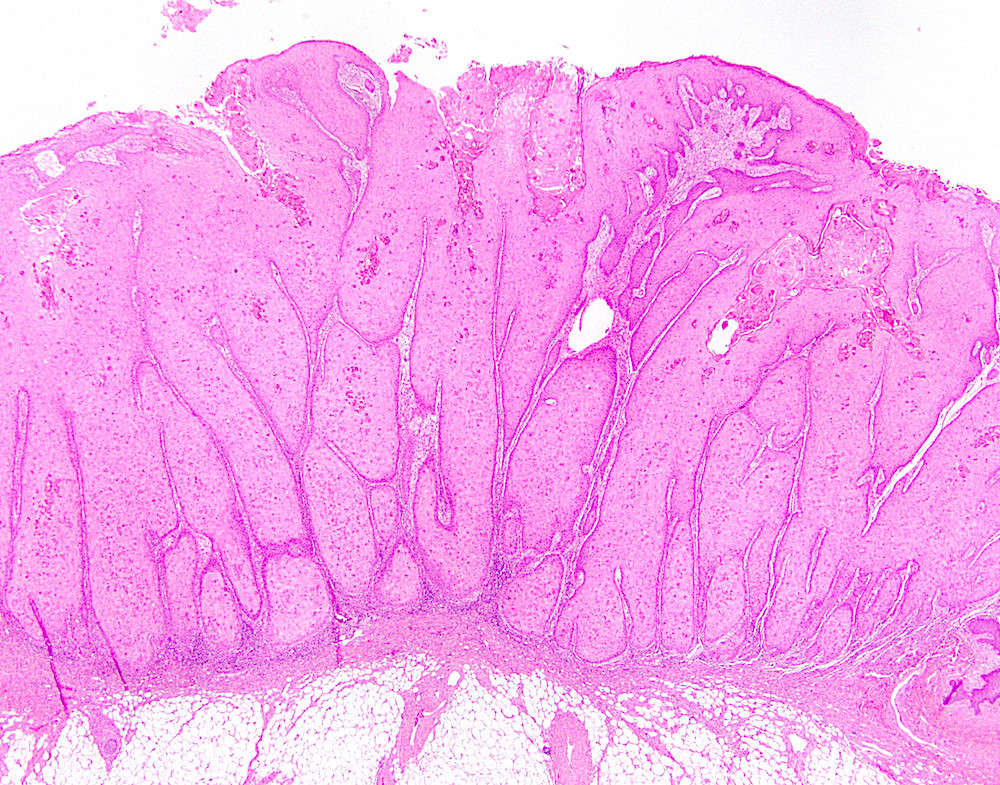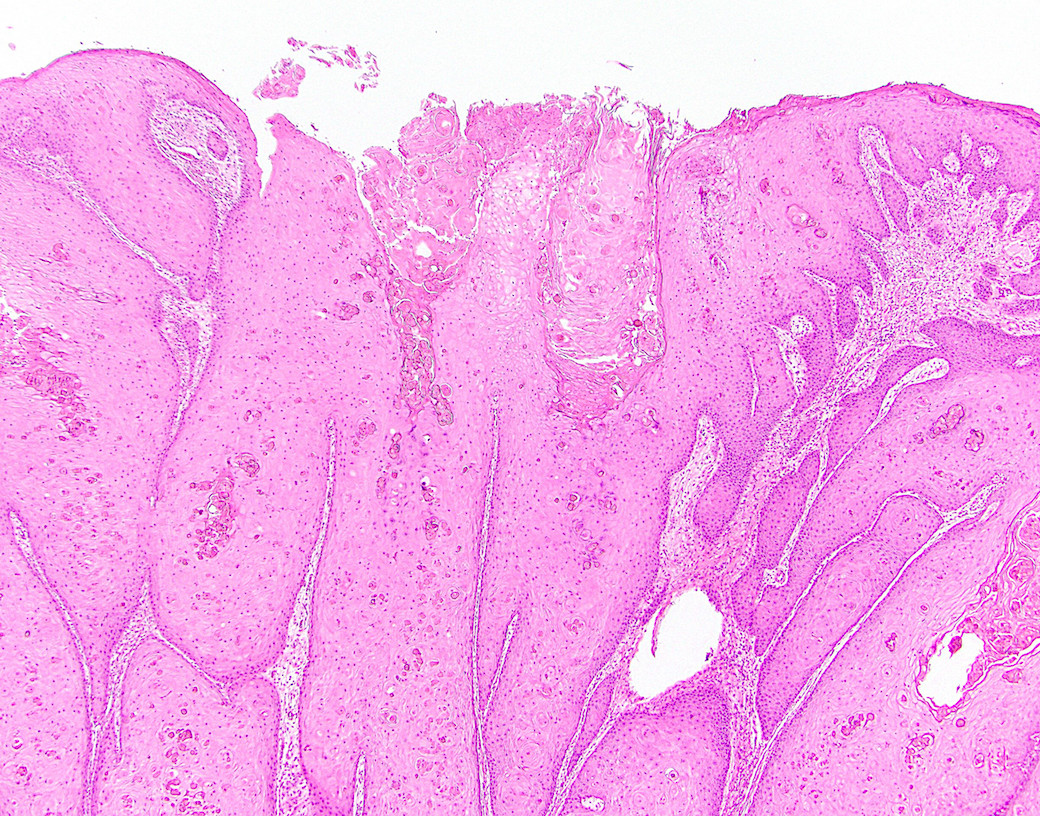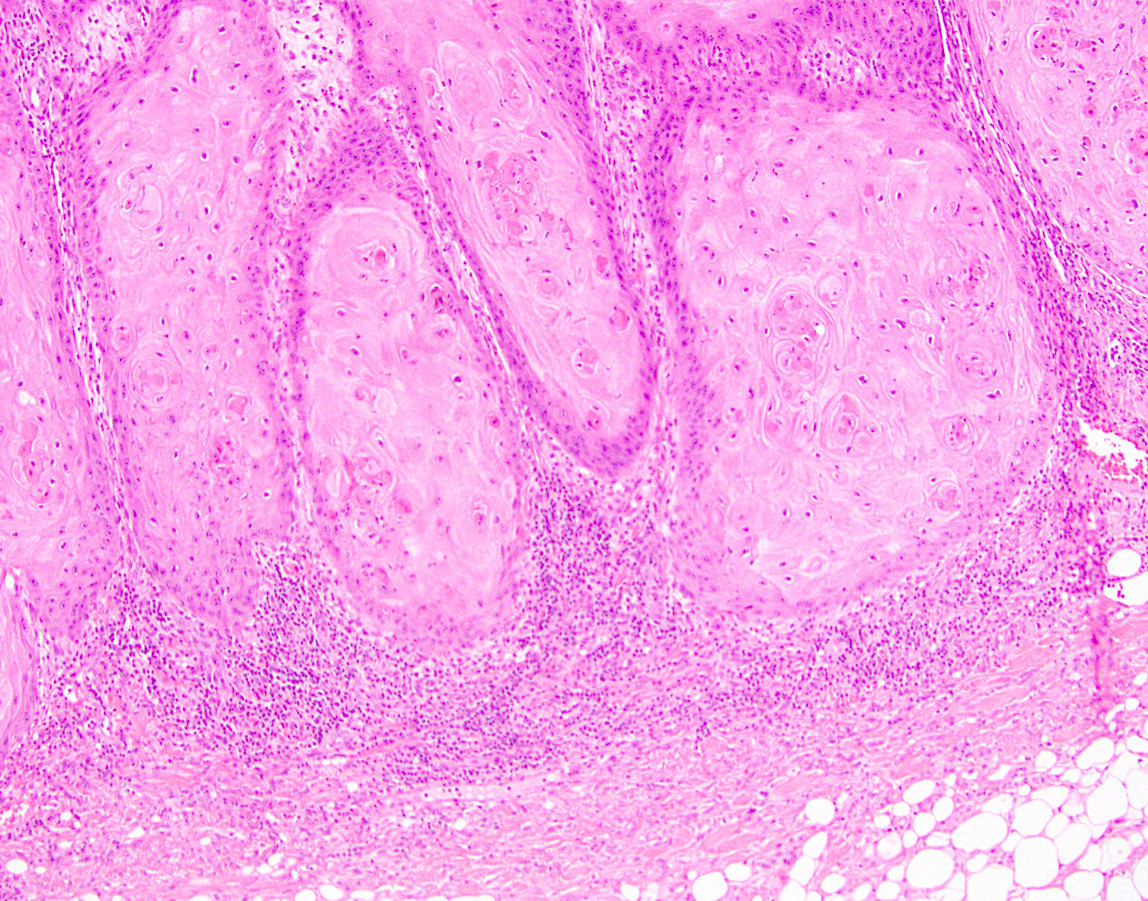Table of Contents
Definition / general | Essential features | Terminology | Epidemiology | Pathophysiology | Clinical features | Case reports | Treatment | Gross description | Microscopic (histologic) description | Microscopic (histologic) images | Sample pathology report | Differential diagnosis | Board review style question #1 | Board review style answer #1Cite this page: Gonzalez RS. Verrucous carcinoma. PathologyOutlines.com website. https://www.pathologyoutlines.com/topic/anusverrucous.html. Accessed April 1st, 2025.
Definition / general
- Uncommon lower grade variant of squamous cell carcinoma
- Considered intermediate between condyloma acuminatum and squamous cell carcinoma
Essential features
- Uncommon very well differentiated form of squamous cell carcinoma, generally negative for HPV (WHO Classification of Tumours Editorial Board: Digestive System Tumours, 5th Edition, 2019)
- Does not metastasize; decent prognosis overall
- May transform into conventional squamous cell carcinoma
Terminology
- Giant condyloma acuminatum / Buschke-Löwenstein tumor: sometimes postulated to represent the same entity or spectrum of disease (Histopathology 1985;9:1155)
- Large condyloma acuminatum term has been proposed for tumors 2 - 10 cm, with giant referring to those > 10 cm (Mod Pathol 2008;21:112A)
Epidemiology
- More common in men
Pathophysiology
- Per reports, can occasionally be caused by HPV 16 (Am J Clin Pathol 1991;96:318)
Clinical features
- Large anal tumor (often > 10 cm) that may be accompanied by abscess or fistula
- Often will recur but does not metastasize; mortality is approximately 20% (Dis Colon Rectum 1994;37:950)
Case reports
- 50 year old man with anal verrucous carcinoma and penile condylomata acuminata (Dermatology 2000;200:320)
Treatment
- Surgery is mainstay; use of neoadjuvant chemoradiation or imiquimod and CO2 laser ablation may be effective (World J Surg Oncol 2013;11:231, Dermatology 2003;207:119)
Gross description
- Polypoid; resembles a condyloma but is larger
Microscopic (histologic) description
- Very well differentiated squamous malignancy with minimal atypia and pushing borders
- Locally destructive, without obvious invasive features, lymphovascular invasion, etc.
- Can exhibit surface maturation and extensive keratinization
- May transform into conventional squamous cell carcinoma; rate of such transformation may be dependent on tumor size
- Similar to verrucous carcinoma at other sites
Sample pathology report
- Anus, resection:
- Verrucous carcinoma (see synoptic report and comment)
- Comment: Verrucous carcinoma is effectively considered a subtype of well differentiated squamous cell carcinoma, with a good prognosis overall.
Differential diagnosis
- Condyloma acuminatum:
- Smaller and more superficial
- No destructive growth
- Squamous cell carcinoma:
- Obviously invasive, with cytologic atypia and frequent mitotic figures
- Buschke-Löwenstein tumor:
- No obvious invasive component, has koilocytes
Board review style question #1
Board review style answer #1
C. It may transform to traditional squamous cell carcinoma
Comment Here
Reference: Verrucous carcinoma
Comment Here
Reference: Verrucous carcinoma








